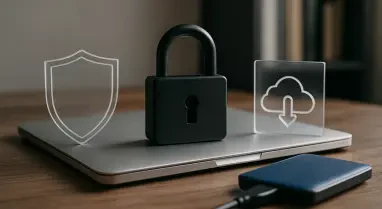Many organizations believe that providing cybersecurity awareness training to employees is sufficient to establish a strong culture of awareness. However, the most security-focused companies pay attention to how they deliver training and what topics they cover.
Cyber threats evolve rapidly, so training programs that fail to keep pace become outdated. Before 2023, there was limited awareness of double supply chain attacks. Recent data indicates that over 80% of leaders state their organizations have a security awareness and training program, yet more than 50% believe their staff lacks sufficient cyber awareness. This method highlights essential gaps in the subjects that these programs address.
To make your training effective, consider incorporating these 14 essential cybersecurity awareness topics.
Primary Benefits of Constantly Fortifying Your Defenses
As cyber threats become more intricate, many attacks are now targeting users directly. A significant portion of cyber incidents stems from a lack of security awareness among employees. So, investing in practical cybersecurity awareness training has become vital for agility. A comprehensive and up-to-date training program can transform employees from potential vulnerabilities into a strong line of defense, enabling them to identify and avoid many cyberattacks and breaches.
Most corporate leaders recognize that enhancing employee awareness of cybersecurity can substantially reduce the likelihood of attacks. Security awareness training offers invaluable benefits to organizations, including:
Educating employees about the evolving threat landscape.
Helping them understand the value of the data they handle and the best practices for protecting it.
Mitigating potential financial losses.
Making sure your employees understand their roles and responsibilities in complying with regulations such as the General Data Protection Regulation, the Health Insurance Portability and Accountability Act, and the Digital Operational Resilience Act.
Choosing a Training Program 101
When selecting a training program, ensure you include the following cybersecurity awareness topics:
1. Phishing Awareness
Employees need to recognize phishing attempts and avoid being deceived by email scams. These scams involve outsiders pretending to be trustworthy people or companies.
Training should cover these key points:
Check Sender Email Addresses: Employees should carefully check sender addresses for any typos or minor changes from known contacts.
Investigate URLs: They should review links in emails thoroughly before clicking on them.
Identify Phishing Language: Look for signs of phishing, such as urgency, generic greetings, and bad spelling or grammar.
Additionally, training should include other methods, such as fake text messages (smishing) and phone calls (vishing). Discuss common phishing tactics, which may consist of fake job offers or impersonations of trusted organizations.
Be aware of targeted spear phishing attacks, which target specific individuals or roles, like imitating a high-ranking executive or focusing on finance teams.
The most effective way to enhance phishing awareness is through phishing simulations, which offer data-driven campaigns and adaptive training that help employees recognize and avoid phishing scams.
2. Password and Authentication Security
It is essential to educate people on creating strong and unique passwords, as well as utilizing multi-factor authentication. These steps help keep their accounts secure and lower the chances of unauthorized access.
Despite the billions of stolen credentials available on the dark web, hackers face challenges when attempting to breach accounts secured with MFA. Users must use an additional verification method in conjunction with their password. This step can include biometrics or a one-time code sent to their phone.
Furthermore, discussing best practices for Single Sign-On security is essential. This method can help mitigate account takeover attacks that may target both employees and customers.
3. Social Engineering Defense
Malicious actors employ more sophisticated methods than regular phishing scams to trick people into sharing sensitive information, downloading harmful attachments, or clicking on suspicious links. Practical training should cover various social engineering tactics that cybercriminals may employ, such as pretexting, baiting, and tailgating.
It’s also essential to teach employees how to verify identities and requests, especially when these involve accessing sensitive data or making financial transactions.
4. Safe Internet Practices
Many cyber breaches occur due to risky online habits. To keep information safe, employees should learn the following best practices in cybersecurity training:
Use websites with secure HTTPS connections.
Steer clear of downloading files or programs from sources that your teams have not yet verified.
Be cautious about the information shared on social media or professional sites, such as LinkedIn.
Also, remind employees that most public Wi-Fi networks are not secure. If they must use these networks, it’s important to connect through a VPN to protect their information.
5. Email Security
To keep your email secure, be careful with attachments and links from unknown sources. Use spam filters and report any suspicious emails. Employees need to understand the risks associated with sharing sensitive information via email. Always use an encrypted connection to protect confidentiality and data security.
6. Mobile Device Security
As personal and work lives blend, employees need to use both individual and company-issued mobile devices safely when accessing work-related data. Start by enabling basic security features, such as setting up a screen lock and promptly installing security updates for the operating system.
Be careful about downloading apps from unverified sources outside official app stores. Doing so can pose serious security risks.
7. Data Protection and Privacy
Employees are essential for protecting your company’s sensitive information. Training should emphasize the importance of this responsibility and help employees learn how to maintain data privacy, accuracy, and accessibility.
It is crucial to distinguish between different types of data that require protection, such as Personally Identifiable Information, Protected Health Information, and Intellectual Property. Additionally, the training should outline the legal consequences of data breaches.
Finally, the training should cover secure practices, such as data minimization, encryption, and access control, to further enhance data protection.
8. Malware and Ransomware
Understanding malware and ransomware means recognizing how malicious software can compromise your systems. Most infections happen through email attachments or fake websites. It’s also important to exercise caution when enabling macros in Microsoft Excel and running files from untrusted sources. Employees need to learn what to do if they accidentally install malware on their devices.
9. Remote Working Security
As more people work from home, it’s essential to maintain the security of remote work. Start by enhancing your home internet security. Update your router’s default settings and regularly update its firmware. Protect your devices from theft and make sure no one can access them without permission. Lastly, understand your company’s remote work policy.
10. Cloud Security
On average, businesses are currently using 371 Software as a Service (SaaS) applications, highlighting the continuous evolution of cloud infrastructure and data storage. It is essential for employees who access any cloud service to understand specific security measures, which are:
Ensure that you use applications that have been vetted and approved exclusively.
Sharing data securely.
Use configuration management tools to avoid misconfigurations.
Encrypt your data before you upload it to cloud services.
11. Artificial Intelligence
The rapid rise of AI tools in various jobs has both benefits and significant security risks. Currently, more than 60% of knowledge workers use generative AI tools like ChatGPT daily.
Employees need to get training on cybersecurity topics related to AI. They need to be aware of the risks associated with sharing confidential or sensitive information using these tools. Additionally, it is crucial to understand how cybercriminals can misuse generative AI to create realistic phishing emails and other scams.
12. Physical Security
Physical security and cybersecurity are interconnected. Vulnerabilities in physical security, such as allowing unauthorized individuals into the office, improperly disposing of sensitive documents, or leaving computers unattended, can result in significant cyber threats.
The boundary between physical security and digital security is becoming less clear. Internet of Things (IoT) devices collect data from the real world, while Operational Technology (OT) systems manage physical operations. A security incident can have serious consequences in real life. Therefore, it is essential to adhere to the best security practices for both areas within your organization.
13. Incident Reporting Procedures
Every incident response strategy should include clear procedures for reporting security breaches. For the approach to be practical, staff need to understand the specific actions they should take if they suspect a security incident has occurred. Security awareness training should educate employees on whom to contact and what information to provide when reporting any suspicious activity.
14. Security Policies and Procedures
Finally, offer training that enhances understanding of your organization’s specific security policies and procedures. This training should address the regulatory obligations relevant to your sector, acceptable use guidelines, protocols for categorizing and managing various data types, and the rules concerning the use of personal devices for work-related tasks.
Conclusion
Your team needs to take part in cybersecurity awareness training. This training should cover a wide range of topics, including the latest updates, to improve their effectiveness. Additionally, it’s essential to ensure that key information is retained, which relies on the teaching methods used.
Consider implementing a fully managed training solution that utilizes data to enhance the learning experience for each employee. This solution follows a proven approach to security awareness training characterized by a continuous learning framework. It includes hands-on experiences, varied training simulations, concise and engaging materials, and prompt feedback, all designed to maximize engagement, retention, and overall effectiveness.






